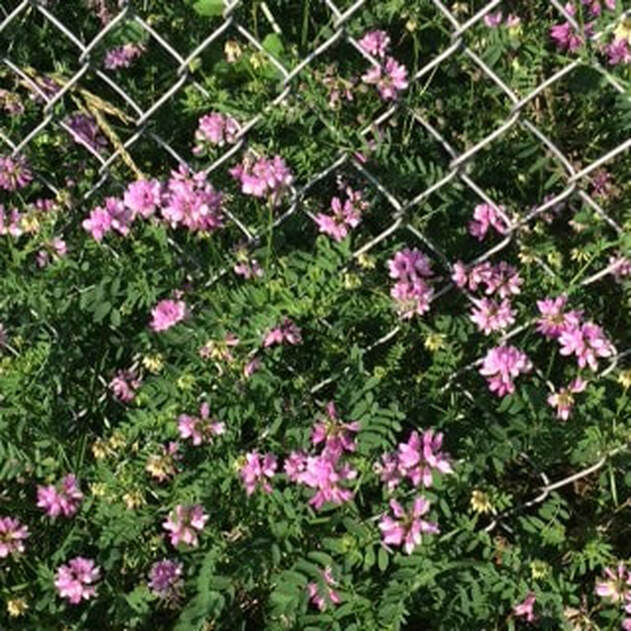|
Story and photo by Donna Iverson
Mother Nature is a guerrilla gardener. She doesn't leave any waste place, abandoned lot, alleyway or backwoods path without a perfusion of flowering weeds. Or sometimes, escaped cultivated flowers. Many of them are aliens and invasive, but also beautiful. Among my favorites are Queen Anne's Lace, Creeping Bellflower, Canada Thistle. Common Milkweed, Chicory, Mullein, Spotted Knapweed, Motherwort, Deadly Nightshade, Yarrow, Mallow, and the vetches, like Crown, Hairy and Cow Vetch. More and more I am seeing homeowners and even business owners landscaping with "weeds" like Queen Anne's Lace, Common Milkweed and even Lake Michigan dune grass. Our love-hate relationship with these flowering weeds is perhaps best exemplified by the vetches. Vetches grow prolifically and can quickly take over a yard or garden. They are difficult to eradicate unless you catch them early, by mowing them down in early spring before their roots and tendrils spread. To the casual observer, it is a lovely plant that beautifies many a waste place and personally, I am always delighted to see their colorful pink flowers which attract endangered pollinators like bees and butterflies. Historically, vetch was more than just a pretty weed. In earlier days, farmers used vetch as fodder for their livestock and municipal crews planted it along roadsides in the 1950s to prevent erosion. That is likely why there is so much of it in lower Michigan. Still vetch is controversial. My cousin and I argue whether vetch is a friend or a foe . She says foe as it has taken over much of her suburban yard and is impossible to eradicate now that it has spread so invasively. I on the other hand, think vetch is beautiful and am thrilled to find it along abandoned lots and in city alley ways, growing profusely on wire and wooden fences. . Depending on which side of the fence you are on, some gardeners are deliberately welcome these invasive flowering weeds into the yard. A neighbor of mine has let Queen Anne's Lace grow along the side of her lot, looking for all intent and purposes like a wild flower garden. And a downtown retail store, grows it in the terrace way along a busy street. Of course admiration for flowering weeds flies in the face of the recent focus on growing native plants, adapted to the environment they evolved in. Invasive aliens tend to crowd out the native plants, which provide the best source of food and habitat for pollinators, birds and other wildlife. For example, Queen Anne's Lace is an alien flower native to the temperate regions of Europe. It is highly invasive and crowds out native plants like Common Milkweed. Still I love Queen Anne's Lace and its look-alike cousin Yarrow, which is native to North America. Bottom line for me is: enjoy these flowering aliens in the waste places where they crop up. But to save our pollinators, it's time to seek out native plants and begin to incorporate them into our yards and gardens, to help sustain local wildlife, especially milkweed which Monarch Butterflies depend on for their survival.
0 Comments
Your comment will be posted after it is approved.
Leave a Reply. |
Archives
April 2024
Categories |

 RSS Feed
RSS Feed